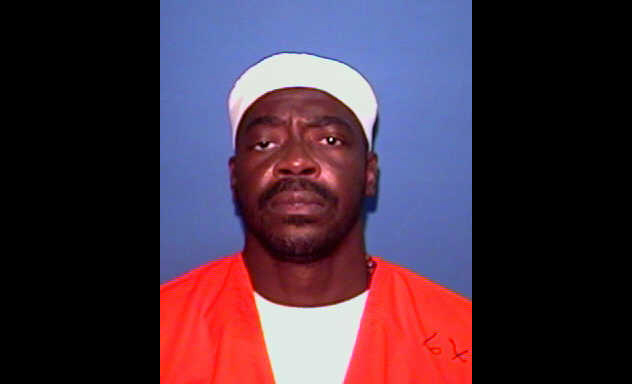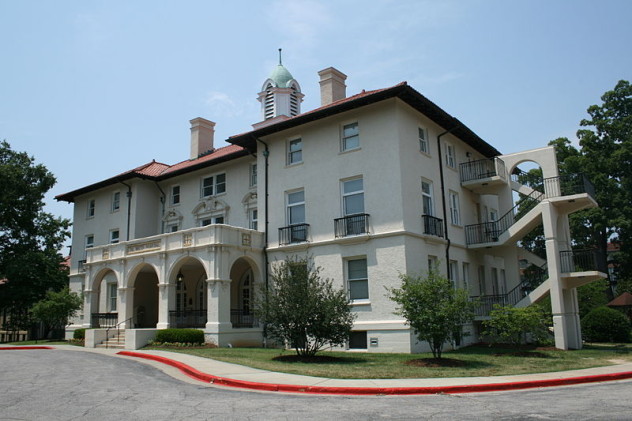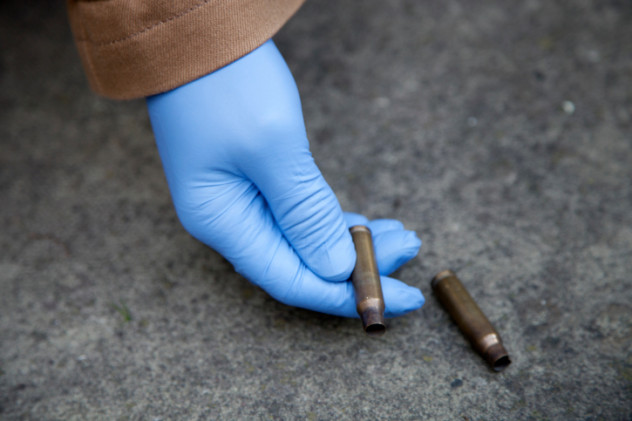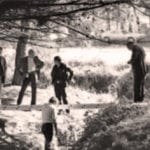 Weird Stuff
Weird Stuff  Weird Stuff
Weird Stuff  Facts
Facts 10 Facts about the Hidden World of Microbial Art
 Mysteries
Mysteries 10 Human Capabilities That Scientists Don’t Understand
 Our World
Our World 10 Extraordinary Efforts to Stop Pollution
 Our World
Our World 10 Incredible Discoveries That Were Announced This Year
 History
History 10 Historical Figures You Didn’t Know Had Tattoos
 Food
Food 10 Head-Scratching Food Fads That Have (Mostly) Come and Gone
 Movies and TV
Movies and TV 10 Sequels That Simply Repeat the First Film
 Technology
Technology 10 Surprising Stories Made Possible by Cutting-Edge Technology
 Animals
Animals 10 Popular Misconceptions about Dogs
 Weird Stuff
Weird Stuff The Ten Most Bizarre English Aristocrats Who Ever Lived
 Facts
Facts 10 Facts about the Hidden World of Microbial Art
 Mysteries
Mysteries 10 Human Capabilities That Scientists Don’t Understand
Who's Behind Listverse?

Jamie Frater
Head Editor
Jamie founded Listverse due to an insatiable desire to share fascinating, obscure, and bizarre facts. He has been a guest speaker on numerous national radio and television stations and is a five time published author.
More About Us Our World
Our World 10 Extraordinary Efforts to Stop Pollution
 Our World
Our World 10 Incredible Discoveries That Were Announced This Year
 History
History 10 Historical Figures You Didn’t Know Had Tattoos
 Food
Food 10 Head-Scratching Food Fads That Have (Mostly) Come and Gone
 Movies and TV
Movies and TV 10 Sequels That Simply Repeat the First Film
 Technology
Technology 10 Surprising Stories Made Possible by Cutting-Edge Technology
 Animals
Animals 10 Popular Misconceptions about Dogs
10 Unsolved Lovers’ Lane Murders
You’re on a date. It’s late at night, the moon is out, and you’ve parked the car. You look over your shoulder and see that the coast is clear. After a couple attempts, your partner eases the seat back. You move close. Your lips are almost touching. Then something hits the windshield. “What’s that?” you ask. You exit the driver’s side door and begin investigating. Within seconds, you’re dead. A hook, a knife, or an axe is sticking out of your chest. Your date screams and scrambles out of the car, but it’s already too late.
The fear of an unknown intruder ruining your chances of getting lucky is so prevalent in American folklore that it even has a catchy name—“The Hook.” At its core, “The Hook” combines several tropes into one ball of fear. It combines sex with death. It touches on our collective fears concerning intimacy and insanity. It also reaffirms what H.P. Lovecraft stated so many years ago in his essay “The Supernatural Horror in Literature”—that our greatest fear is the fear of the unknown, whether that be the future, strangers, or the dark.
While it can be easy to pass “The Hook” legend off as just another precautionary warning about the dangers of premarital sex, there’s always something true behind urban legends. In this case, many murderers and serial killers have targeted couples parked in so-called “lovers’ lanes” over the years.
10 Texarkana’s Phantom Killer
The term “serial killer” was not yet in the American lexicon in 1946 when an unknown assailant killed five people within the span of 10 weeks, making the Texarkana Moonlight Murders an early serial killer case in postwar America. Described as a strong man who wore a white sack as a disguise (a look that was reproduced in the 1976 film “The Town That Dreaded Sundown“), the Phantom Killer typically attacked young couples parked in remote lovers’ lanes with a .32 Colt.
His first two victims, 24-year-old Jimmy Hollis and 19-year-old Mary Jeanne Larey, managed to survive their ordeal after Larey escaped and called the police from a nearby house. According to their testimony, a man had approached Hollis’s Plymouth with a flashlight, which had led the pair to believe that he was a police officer. The hooded man forced both Hollis and Larey to exit the vehicle. He then told Hollis to remove his pants. When Hollis hesitated, the unknown attacker pistol-whipped Hollis repeatedly before sexually assaulting Larey. Neither Hollis nor Larey managed to see their attacker’s face.
On March 24, 1946, US Navy veteran Richard L. Griffin and his girlfriend Polly Ann Moore were found dead in Griffin’s car. Both had been shot in the back of the head. Less than a month later, on April 13, Paul Martin and Betty Jo Booker were diverted from their destination and murdered. Martin was shot in the face, neck, shoulder, and hand, while Booker was shot in her chest and face. Both bodies were dumped not far from Spring Lake Park, another lovers’ lane used by Texarkana teens.
The Phantom’s final attack was his most unusual. On Friday, May 3, the Phantom invaded the lonely farmhouse of Virgil and Katy Starks. He killed Virgil by shooting him with a .22 pistol from an outside window. Katy managed to escape to a neighbor’s house after being shot in the face. Investigators concluded that the killer had tried to chase after Katy by following the trail of blood she left behind. Unlike his previous attacks, the Phantom attacked the Starks with a .22 instead of a .32, and the crime itself occurred outside of Texarkana in Miller County, Arkansas. These disparities initially led some investigators to believe that the Starks were not attacked by the Phantom.
Although police arrested a habitual car thief named Youell Swinney after his wife accused him of being the Phantom, they could not try Swinney for the murders after his wife refused to sign her multiple confessions. Despite this, Swinney remains the primary suspect and is often named as the man behind the white hood.
9 The Murders Of Elaine Eldridge And Lawrence Hogan

While Youell Swinney languished in a jail cell in Texas, a double homicide was committed many miles away in Florida that bore all the hallmarks of Texarkana’s Phantom Killer. On October 9, 1946, Lawrence O. Hogan, a 21-year-old from Miami Beach, and Elaine Eldridge, a 24-year-old from Massachusetts, were shot with a .32 pistol while their car was parked along a desolate stretch of beach not far from Fort Lauderdale. Investigators found that Hogan had been shot in the chest. A shoeless Eldridge had been shot in the face and died several strides behind the car.
Like the Texarkana victims, Hogan and Eldridge were found clothed with their money and other valuables intact. Seeing the similarities between their cases, Homer Garrison Jr., the Director of Public Safety for the state of Texas, contacted Sheriff Walter Clark in Florida to see if the Texarkana Phantom Killer was still at large. Sheriff Clark’s reply disclosed that the murderer in the Florida case had used a foreign-made pistol instead of an American-made Colt and voiced the opinion that Hogan and Eldridge had been murdered during a botched robbery.
After receiving Sheriff Clark’s letter, investigators in Texas ruled out a connection between the two cases. Still, many amateur sleuths believe that Hogan and Eldridge were murdered by the elusive Phantom Killer.
8 The Duck Island Killer

Duck Island in central New Jersey doubled as a landfill and a lovers’ lane in the late 1930s. Couples used the area for their trysts despite knowing that some of the locals were spying on them. One such local went from being a Peeping Tom to a murderer on a cold night in November 1938. After hearing a scream in the darkness, another pair of parked lovers went to investigate. They found the body of 20-year-old Vincent Tonzillo dead in the front seat. Next to him was a bloody but still alive 15-year-old Mary Myatovich. Myatovich was rushed to a nearby hospital where she told police that a short, stocky, black man had held them up with a shotgun. When Tonzillo, who was married to someone else at the time, refused to hand over any money, Myatovich said that the man shot him. Fearing for her life, Myatovich took off but was shot in the buttocks by her attacker, who then raped her.
Myatovich’s story was not believed by investigators. Instead, detectives suspected that either Tonzillo’s wife or Myatovich’s father was responsible. Then, in October 1939, a man looking for scrap on the beach uncovered the body of 36-year-old Kitty Werner. Also nearby was the body of Frank J. Kaspar, a 28-year-old mechanic from Trenton who was found dead in his parked car. Both had been killed with a shotgun. Again, like Tonzillo and Myatovich, Werner and Kaspar were a cheating couple who used Duck Island as a quiet lovers’ lane.
Another double murder followed suit. In November 1940, Caroline Moriconi and Louis Kovacs were killed with a shotgun. In March 1942, a Pennsylvania couple named John Testa and Antoinette Marcantonio were so viciously attacked with a shotgun that the weapon’s stock broke after delivering repeated strikes. Amazingly, both survived the ordeal, while detectives managed to retrieve the gun’s serial number from a piece of the broken stock. Using stamp “A-639,” police were able to identify the weapon as a single-barrel Harrington & Richardson shotgun. After working through the gun’s history, investigators found that the gun belonged to an Army private named Clarence Hill, who was at the time stationed in in South Carolina. Hill, who matched Myatovich’s description, was given over to the Hamilton Township Police Department, where he confessed to the murders.
Hill stood trial for the murders (including the murder of Mary Myatovich, who died days after giving her eyewitness account) in December 1944. After a brief trial, Hill was sentenced to life in prison. Jurors at the time requested leniency due to the fact that Hill had cooperated with police, while others were concerned that Hill’s confession had been coerced by brutal interrogation tactics. Hill only served 20 years before being paroled in 1964.
7 The Murders Of Maxine Arnold And Terry Gooderham
 Terry Gooderham lived in the fast lane. An accountant and auditor who primarily worked with drinking establishments in London, Gooderham had not one but two girlfriends. On the night of December 22, 1989, he parked his Mercedes down a well-known lovers’ lane in Epping Forest in Greater London so that he and 32-year-old Maxine Arnold could have some time alone. Only hours later, the pair was found dead.
Terry Gooderham lived in the fast lane. An accountant and auditor who primarily worked with drinking establishments in London, Gooderham had not one but two girlfriends. On the night of December 22, 1989, he parked his Mercedes down a well-known lovers’ lane in Epping Forest in Greater London so that he and 32-year-old Maxine Arnold could have some time alone. Only hours later, the pair was found dead.
Although police initially believed that jealousy was to blame, later developments pointed toward organized crime. In particular, before the murders, Gooderham had delved deeply into the London criminal underground, where it was rumored that he was involved in selling drugs and embezzlement. It was also whispered that Gooderham, while acting as the mob’s accountant, uncovered a serious case of public fraud. This knowledge may have gotten him killed. Another theory is that Gooderham was killed for skimming £250,000 from the Adams family crime syndicate.
Today, a favorite suspect is contract killer Jimmy Moody. Moody himself was killed in 1993 by an unknown shooter.
6 The Peyton-Allan Murders

Larry Peyton and Beverly Allan, both 19, were just looking for a quiet place to neck on the night of November 27, 1960. They chose Forest Park, a secluded spot in the bustling city of Portland, Oregon. Sometime after Peyton parked his 1949 Ford sedan, an intruder caught the two lovers and killed them without remorse.
A day later, a police officer looking for stolen cars found Peyton’s corpse inside of his car, which had been left with its doors open. Peyton had been stabbed 23 times. Allan’s body was found 43 days later in a ditch miles away from Peyton’s corpse. Almost immediately, the crime scene was ruined by the Multnomah County Sheriff’s Department, who rummaged through Peyton’s car without any consideration toward preserving the integrity of the crime scene. This mistake was further compounded by the fact that a repeat offender named Edward W. Edwards, who had been seen not far from Peyton’s car the day after his body was discovered, was allowed to escape from the county jail after being booked for pulling fire alarms as a prank. Years later, Edwards became a convicted serial killer.
Desperate to solve the case, investigators relied on a collection of unreliable eyewitnesses and charged Eddie Jorgenson and Robert Brom with the double homicide. The pair was convicted and initially given long prison sentences, but they were released within a few years. Nowadays, few believe that either Jorgenson or Brom committed the murders. The Zodiac Killer, who terrorized Northern California between 1968 and 1969 and committed two double homicides wherein couples were shot to death while parked in lovers’ lanes, is often named as the man responsible for the deaths of Peyton and Allan.
5 The Valentine’s Day Killings

After leaving a Valentine’s Day dance held at Watts Hospital in Durham, North Carolina, sometime around 11:30 PM, detectives believe that 19-year-old Jesse McBane and his girlfriend Patricia Mann drove to a rural lovers’ lane near Medford Road. The couple was at some point forced to get out of the car by a stranger. The stranger then forced McBane and Mann to get into the trunk of his car, which he then promptly drove down a more secluded dirt road. Once satisfied that the three of them were in a remote location, the killer strangled the young couple. Rather than strangle McBane and Mann quickly, the killer tightened the rope for stretches at a time, then let it go slack, thus causing his victims to go in and out of consciousness. Finally, both McBane and Mann, who also had their hands and bodies bound together, died and later received puncture wounds to their chests.
McBane and Mann were found weeks later, which sparked a large-scale investigation involving local and statewide agencies. But before the end of 1971, the case had already gone cold. The next clue wouldn’t come until December 29, 1995, when an anonymous man using a pay phone contacted Jesse McBane’s relatives and confessed to committing the murders. Currently, cold case detectives and amateur investigators are looking into two possible suspects, one of whom was affiliated with Watts Hospital in 1971.
4 The Ten Mile Flat Murders

It took two days before friends and family started searching for David Sloan, 21, and Sheryl Lynn Benham, 19. The couple had last been seen alive at a fraternity party held on the campus of the University of Oklahoma. On May 11, 1970, the search party found Sloan’s abandoned car near a wooded ravine in an area known as Ten Mile Flat. Located on Norman’s western fringe, Ten Mile Flat was a well-known lovers’ lane. When police found Sloan and Benham dead in the trunk of Sloan’s car, they surmised that the pair had been killed by an unknown attacker at the scene. Unfortunately, the crime scene did not offer any valuable clues—there were no useful tire tracks or fingerprints. Since police could not locate any eyewitnesses, the case turned cold.
The only solid fact found during the original investigation revealed that Benham and Sloan had been shot more than 10 times before their bodies were dumped into Sloan’s 1966 Pontiac GTO. Decades later, after the case was reopened in 1990, 55-year-old Frank Edward Gilley stood trial for the murders after Carolyn Wrobleski and Linda Leveridge gave eyewitness testimonies stating that they had seen another car parked behind Sloan’s GTO on the night of the murder. At the same time, Gilley blamed another former police officer, Brian “Butch” Green, who was himself the victim of a double homicide in 1971, for the murders. Gilley was ultimately acquitted due to a lack of evidence. Today, some people believe that the ghosts of Sloan and Benham haunt Ten Mile Flat.
3 The 3X Killer

Like the later Son of Sam, the 3X Killer, who targeted the New York borough of Queens in 1930, preyed on lovers’ lanes. His first kill happened on June 11, 1930. Grocer Joe Mozynski and 19-year-old Catherine May were attacked while they were parked in a lovers’ lane near College Point. The gunman shot Mozynski and ordered May out of the car. There he raped her and burned some letters she was carrying in her purse before putting her on a trolley and handing her a letter written in red ink that read: “Joseph Mozynski 3X3-X-097”
In the aftermath, newspapers began reporting that police were looking for a foreigner who was a “shabbily dressed man of about 40, five feet, six inches tall.” On June 13, the first of the 3X Killer’s letters reached the press. While this letter provided a sequence of numbers and letters, the second letter, received on June 14, called Mozynski a “dirty rat” and said that he had been killed because of some secret documents.
Despite the killer’s desire for notoriety, police were no closer to discovering his identity when the killer struck again on June 17. The victim, 26-year-old Noel Sowley, was shot while he and 20-year-old Elizabeth Ring were parked in a secluded area near Creedmoor, Queens. During the night, the 3X Killer quietly crept next to the car, then pushed his revolver into Sowley’s face and said, “You’re going to get what Joe got!” As with the earlier murder, the killer let Ring go near a bus stop. After the Sowley killing, the 3X Killer sent another letter to the press, this time proclaiming that “I am the agent of a secret international order.”
The 3X Killer went silent after the Sowley killing. He did manage to send another letter, this one detailing an elaborate espionage caper involving the “Red Diamond of Russia.” While this letter did state that the 3X Killer was now finished because he had returned all of the mysterious stolen documents, a later unsolved double homicide brought the case back into the public’s mind. On October 3, 1937, 20-year-old Lewis Weiss and 20-year-old Francis Hajek were found dead in a lovers’ lane area in Queens. Weiss had been shot in the head, while Hajek had been stabbed seven times in her upper torso. Both victims had red lipstick circles on their foreheads.
2 The Atlanta Murders Of 1977

There’s often a weird symmetry with serial killers. In 1977, while the Son of Sam was busy killing young couples in areas known for being lovers’ lanes, Atlanta was experiencing something terrifyingly similar.
It began on January 16 when 26-year-old LaBrian Lovett and 20-year-old Veronica Hill were found nearly shot to death in a car that had collided with a traffic sign. Lovett had been shot four times in the head, stomach, arm, and leg. Hill had been shot just twice in her left leg and abdomen. Although police managed to find the pair alive at the scene, Lovett and Hill succumbed to their wounds and died at the hospital. Detectives determined that the pair had been attacked while making love in Adams Park, one of Atlanta’s many lovers’ lanes. While detectives were investigating whether or not Lovett or Hill had any enemies or jealous ex-lovers, the killer attacked again. This time, the victims were shot while parked in West Manor Park. They survived and managed to describe their assailant as a large black male. Police also caught another break—ballistic evidence that the same .38 gun had been used in both attacks.
The killer’s final attack occurred on March 12, 1977, when he shot and killed 20-year-old Diane Collins and seriously wounded her fiance. The killer struck the couple while they were busy necking in Adams Park. Approaching from the passenger side, the shooter killed Collins instantly but hit the driver with a non-lethal shot to the head. After this assault, detectives recognized that the killer operated on a four-week cycle. Specifically, there had been 27 days between his first two attacks, then 28 between his second and third. Believing that they now knew the killer’s pattern, police fully expected another assault to occur in April 1977. When it did not, the investigation went ice cold.
1 The Murders Of Andy Atkinson And Cheryl Henry

By all accounts, Andy Atkinson and Cheryl Henry were a couple of knockouts, and they were mad for each other. Henry was an attractive blond college student. Atkinson was an aspiring model. On the night of August 22, 1990, the couple decided to park in a lovers’ lane area on the westside of Houston. Sometime during the night, they were attacked and dragged from their car. The next morning, their bodies were found in a wooded area not far from the lovers’ lane. Both had had their hands bound with rope and their throats slit. Evidence showed that Henry had been raped. Evidence also showed that Atkinson had been tied to a tree and forced to listen to Henry’s last moments alive before he himself was murdered. In an odd move, the killer had covered Henry’s naked body with boards after her death.
Despite the shocking brutality of the murders, the investigation did not turn up any significant leads or suspects until 2008, when DNA testing found that the semen taken from Henry’s body matched DNA that had been collected from an unsolved rape case in 1990. The victim, a 48-year-old former exotic dancer at a club called GiGi’s, gave police enough details about her attacker that detectives were able to complete a composite sketch.
The unsolved rape case also offered up another lead. Both Henry and Atkinson had worked at exotic dance clubs. Detectives speculated that the murderer was a frequent patron of strip clubs in the Houston area. Furthermore, the victim in the 1990 rape case had previously worked for Atkinson’s father, so it’s very likely that the murderer knew his victims. At this point, the case sadly remains an open mystery despite the new DNA lead.
Benjamin Welton is a freelance journalist based in Boston. His work has appeared in The Atlantic, VICE, The Weekly Standard, Listverse, Metal Injection, and others. He currently blogs at literarytrebuchet.blogspot.com.








